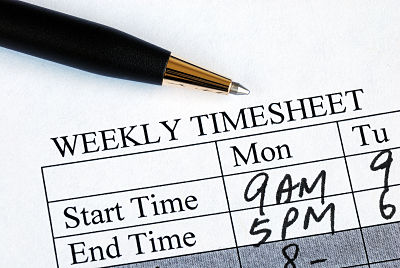First, let’s dismiss the idea that timesheets are somehow unnecessary. It doesn’t matter how you bill, from time and materials to value pricing — you still need accurate, daily timesheets.
Timesheets actually have very little to do with billing. They’re really all about effectiveness and efficiency. Let’s say your agency is dropping 20% to the bottom line. Some would suggest that as long as your agency is profitable, there’s no need for timesheets. But without those little buggers, how will you know which projects were contributing to the profitability? How will you know if your estimates are spot on or a huge miss? How will you know which employees are super stars and which ones are spending twice as much time on a job as they should be?
What if your profit could be 28% and you’re settling for 20%? Worse…what if you profitability could be 15% and you’re settling for 3%?
No one likes them but everyone likes the data and insights they provide. But how do you get your team to actually do them. Here’s a foolproof system that has brought dozens of agencies from 23-45% daily compliance to 95-100% daily compliance.
Step one: Review your timesheet tools (software, job numbering/naming convention, and task codes. If you have more than 10-12 billable tasks and/or more than 8-10 non-billable tasks, then you need to trim it down. Let them use the comments section to be more specific.
You need to make doing timesheets easy and convenient.
Step two: Hold an all staff meeting and explain that daily timesheets (weekly timesheets are 67% less accurate) are required for every employee, including you the owner and that you will be implementing a new program to encourage/reinforce compliance.
During this meeting, review your expectations, which should be:
- Everyone tracks all time, billable and non-billable, every single day
- If employees are working off hours at home, they need to record that time as well (i.e. An AE answering emails during the evening)
- All timesheets must be completed by 10 am the following day (Monday’s timesheet is due by 10 am on Tuesday), There will be no exceptions.
Step three: Assign a timesheet ‘captain” who will check your time tracking software every day and report out to the entire agency who still needs to complete their timesheet for the previous day.
If you stop there, this will not work. Agency employees (including you) have a million excuses for not doing their timesheets. Here’s how to make it stick.
This is a carrot/stick combo strategy. It also relies on the psychology that says people will avoid doing things they don’t want to do, even if it means they miss out on a reward for themselves. But…they will feel very differently if their choices cost someone else a significant reward.
Here’s how it works:
Every day the timesheet captain keeps track of who gets their timesheets in on time. They email out the list of missing timesheets the next morning at 9 am and log completion at 10 am. Everyone who gets their timesheets completed for that day, gets their name put into a “hat” for a future drawing.
As long as the agency has 90% compliance each day of the week — all of the names stay in the hat for that week. If compliance dips below 90% — all of the names in the hat for that week are tossed. If it happens on week four, you don’t dump all of the names in the hat, just the names for that week. (You can start lower and build up if you want but do not start any lower than 75% and advance quickly).=
You start over every Monday. You make it very clear who the offenders are with the daily email and remind everyone the consequences (your team members lose the opportunity to qualify for the reward) if they do not get their timesheets done.
If you have 90% or better compliance each week — everyone would have 20+ entries for the drawing by the end of the month. If you fall short every week, the hat would be empty. If you hit 2 weeks out of four — each person could have 10 shots at the drawing.
You need the monthly prize to be significant. A $25 gift card is not going to cut it. Here are some of the prizes other agencies have offered up for the monthly drawing.
- A $250 gas or VISA gift card
- Two roundtrip plane tickets within the continental US (or within a reasonable distance if you’re outside the US)
- $1,000 cash
- A weekend getaway (2 plane tickets and 2 nights at a hotel)
- $500 cash
Before you freak out — the math is pretty easy to do. You’re going to make more than that amount back with timesheet compliance. Less write offs, better estimates, and more efficient team members.
The prize has to be worthy of some peer pressure. When I have my name in the hat every day and then find out it got emptied because 4 people didn’t do their timesheets, I am going to encourage them to get them done next week.
This won’t work if everything is not public, including the list of the non-compliant people. You have to stick to your guns and walk this out just as it’s described. I have never had an agency who followed the plan that didn’t get to 95+% compliance within three months.
I’ve also never had an agency regret implementing this program. I don’t think you will either.






